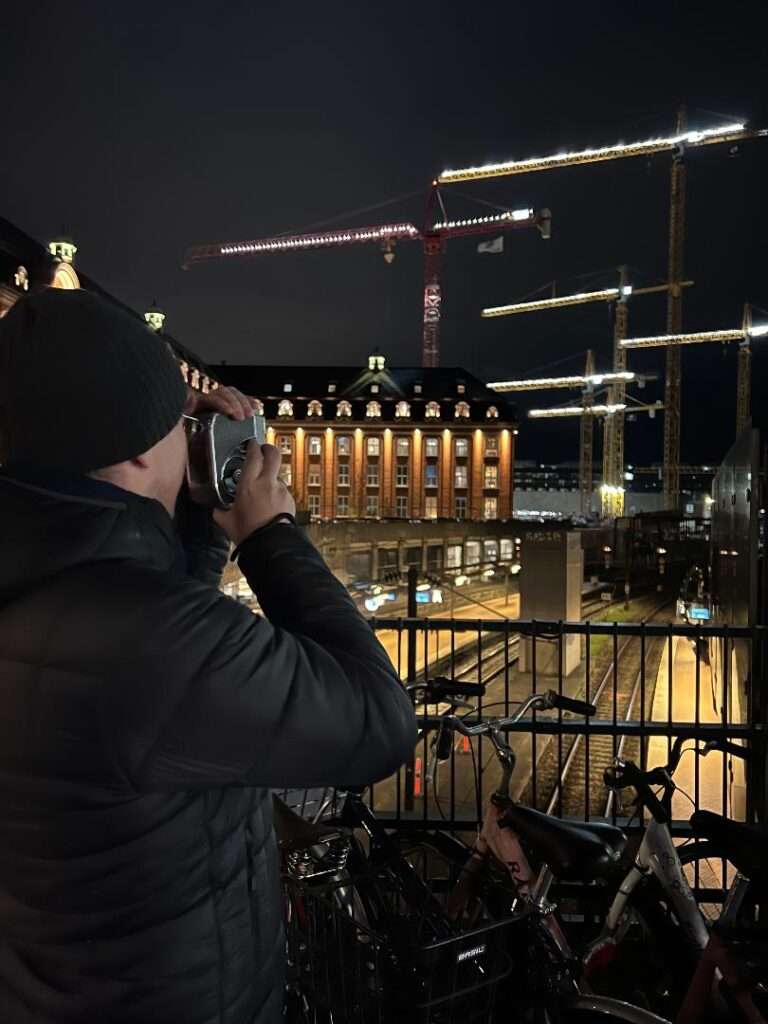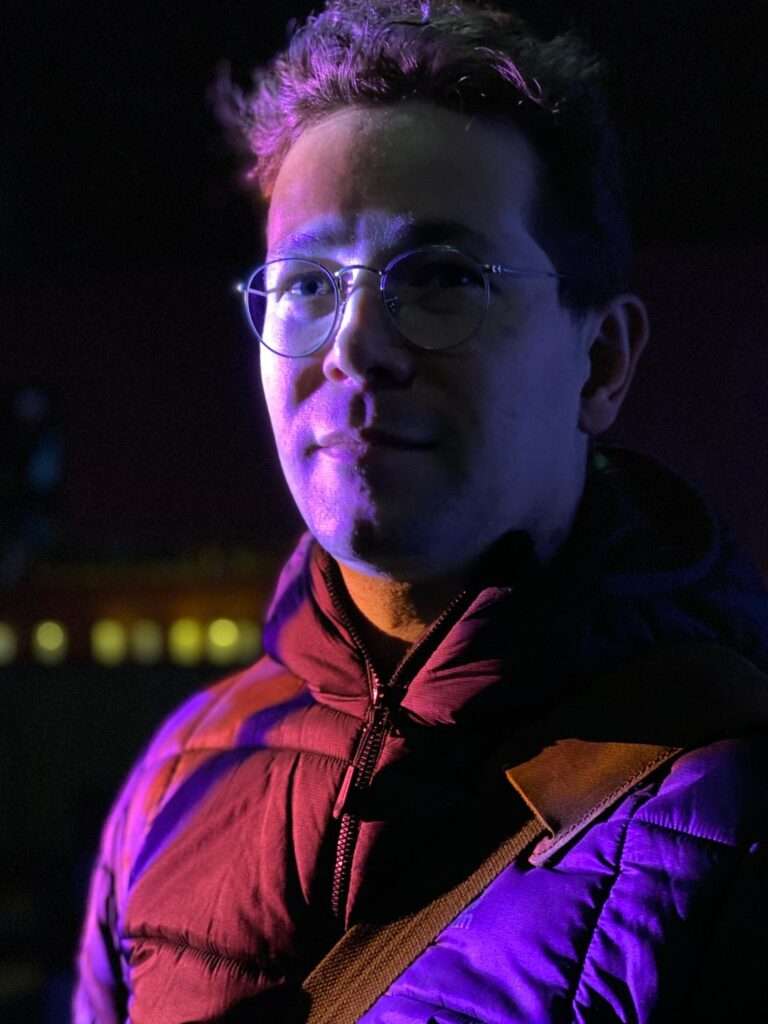
This is our interesting conversation with the German artist, who directed Into the Realm of the Night
Between the short movies selected for the second edition of Indiecinema Film Festival, Into the Realm of the Night is the one which strucked us for its extraordinary formal care, for the nocturnal charm in which darkness and light weave surprising geometries, for how the music itself blends with this score. It was almost inevitable to try to find out more about this work, by contacting the author directly. And so the German diretor Patrick Müller, who can already count a lot of experiences in the field of experimental cinema, granted us such an interesting interview.

The extraordinary vitality of experimental and avant-garde cinema
In the selection process, we really appreciated your work, Patrick, also because together with “Metamorphosis” by Italian director Stefano “Zait“ Oliva and whith “October Eleventh” from United States, it is one of the few shorts of an experimental nature that we have dealt with. Does “Into the Realm of the Night” therefore represent your usual way of making cinema or have you tried different ways so far?
Into the Realm of the Night was new to me. Most of my film poems over the past few years have been with narration, but this one was completely free. In addition, I wanted to go as far as possible with double exposures here: I only knew very vaguely what the result would look like when the other side of the film was exposed and had to think in terms of form and movement. With double exposures, you first expose one side of the film and then run it through again. In the middle of the film, for example, you can see an artificial dragonfly flying through a magical realm. In reality, it was firmly attached to a fairground booth. But since I first filmed a camera pan along a hedge, it appears as if it were flying.
The already mentioned Stefano “Zait“ Oliva, who was also our guest in Rome, speaking of his film often underlined the inspiration that came from the avant-garde, in particular from surrealism. What were the main inspirational artistic currents from the past, for your work? In the search for certain forms, certain contrasts and perhaps also for your origin, seeing “Into the Realm of the Night” it came natural for us to remember Hans Richter …
Oh yes, we are all standing on the shoulders of giants, as the saying goes. I know Hans Richter‘s work, especially his Rhythmus films, which I saw 20 years ago. I also love surrealism, especially Luis Buñuel, and the American surrealism by David Lynch. Surrealism forces us to readjust our perception, wants to provoke, so that one learns to see things in a new way. But what influenced me the most was Film Noir, which keeps showing big city lights and streets that strangely and beautifully reflect the inner lives of the protagonists. My film was made for a very specific reason. In November 2021 I was invited to Copenhagen to present my Emily Brontë adaption Spellbound at a film festival. While there was a deep lockdown in Germany, Copenhagen had just lifted almost all restrictions. I experienced this as a completely unreal, surreal situation and tried to transform my mood into pictures on my first, magical walk through the city.

Something about technique and style
Reading the very detailed technical sheet of your movie, we saw that it was shot in 8mm with a Bauer 88F. What fascinates you more, about still making films like they used to do?
Until 2013 I shot entirely with digital cameras, after that I only shot analogue on film: Super 8, 8mm, 16mm and even 35mm. Most of the time I also develop the films myself in my darkroom. Real film is magical: you don’t have a display, you have a viewfinder to look through. You have to know what you’re doing and only see the recordings after they’ve been developed. But then you see the recordings in a completely new way, like for the first time. I also like the limitations: because every meter of film costs money, you think very carefully about what you want to film. This makes post-production easier and forces you to work even harder with the material. You also have completely unpredictable accidents, which are very welcome. For example, in Into the Realm of the Night, the camera stopped a few times and I had to open it. As a result, the perforations on the film were exposed in some places and you had wandering, geometric figures in the film, which I then consciously used in the editing.
Black and white photography is undoubtedly one of the most refined choices in the film: the continuous alternation of night darkness and lights creates an interesting score, how did you work on this aspect? And was the editing, with the overlays, certain cuts and other very careful choices, therefore also very challenging, demanding?
I knew from the start that I wanted to shoot in black and white because color would have created too much of a happy mood. In addition, the material evokes film experiences that can be different for everyone. During my trip to many festivals, I heard the most diverse associations that the film aroused in viewers: from Expressionism to William Klein. Since all double exposures in the film were created in the camera, I was hardly able to change anything in post-production. I only cut and rearranged scenes in very few places. The right preparation was everything here, so that the immersion from everyday life into the realm of the night was as effective as possible.

The role of music and locations
Very powerful, impressive and closely related to the images is the music. What you can tell us about it?
The music was composed by Uwe Rottluff, a musician from Chemnitz in Saxony, Germany, with whom I have often worked. Uwe experiments with old instruments and creates completely new but organic sounding music. For example, on the soundtrack to my 2019 film The Garden, he used a Trautonium, an instrument also used in Alfred Hitchcock‘s The Birds, to create the voices of the birds. For Into the Realm of the Night, Uwe Rottluff mostly used a Moog modular system to find the right sounds for the nocturnal magic realm.
We also read that the film was shot in Copenhagen, Denmark. We have some memories of the city and we seemed to recognize some places that could be in Tivoli Gardens, an amusement park… so what are these main locations?
Since the camera was very small, I could take it with me everywhere. The beginning of the film was shot near the festival venue, Kulturhuset Islands Brygge, you can even see the cinema entry „Salen“. I also found a charging station for electric buses remarkable. In two scenes you can see the driverless subway, which allowed you to film the lights directly. But I shot most of the film in Tivoli, one of the oldest amusement parks. However, due to the double exposure and the reduced film speed, one perceives it in a completely new way in the film, it becomes a kind of fascinating dream realm.
Finally, what spaces are there for independent cinema and in particular for the even more underground, experimental one, in Germany?
Experimental film has always had a hard time, worldwide. Nevertheless, there is a loyal audience that is very open and hungry for new films. The best places for this are film festivals, where the audience can talk to the filmmakers. In Canada, for example, there is the Artifact Film Festival, in the USA there is the Engauge Film Festival. In the south of France, Un Festival C’est Trop Court in Nice shows experimental films, but also Tous Court in Aix-en-Provence. I was also completely surprised by the enthusiasm for experimental film in South America, where my film was shown at the Museum of Modern Art in Rio de Janeiro, for example. One of the most beautiful festivals for analog filmmaking is Schmalfilmtage in Dresden, Germany. Into the Realm of the Night won the coveted Jury Prize there in 2022, which made me very happy and for which I am very grateful.




